Apple Watch 6 vs Samsung Galaxy Watch 3: the two biggest smartwatch rivals
Two big name smartwatches go head-to-head

The Apple Watch 6 and Samsung Galaxy Watch 3 are the two most important smartwatches of the year.
They are the top watches from the two biggest names in tech, jammed full of features and the latest health metrics, which have become all the more important in 2020.
Each starts at roughly the same price - in fact, the US starting price is exactly the same - so there’s not really even a price gap to consider. So which should you buy? Here’s how the Apple Watch 6 and Samsung Galaxy Watch 3 stack up.
Design and display
Apple hit such a home run with the original Apple Watch design, it hasn’t had to make many significant visual changes since it first landed in 2015.
The Apple Watch 6 comes in 40mm and 44mm variants and is 10.4mm thick. Its casing can be made of aluminum or stainless steel depending on how much you want to pay. But, new for this year, the aluminum version is available in blue, and the stainless steel in shiny gold.
Colors aside, the Apple Watch 6 is the Apple Watch as you’ve always known it, at least in a surface-level sense.
The Samsung Galaxy Watch 3 is different. Samsung’s first Galaxy Watch was great, but bulky and perhaps a little overtly masculine for some tastes.
Sign up for breaking news, reviews, opinion, top tech deals, and more.
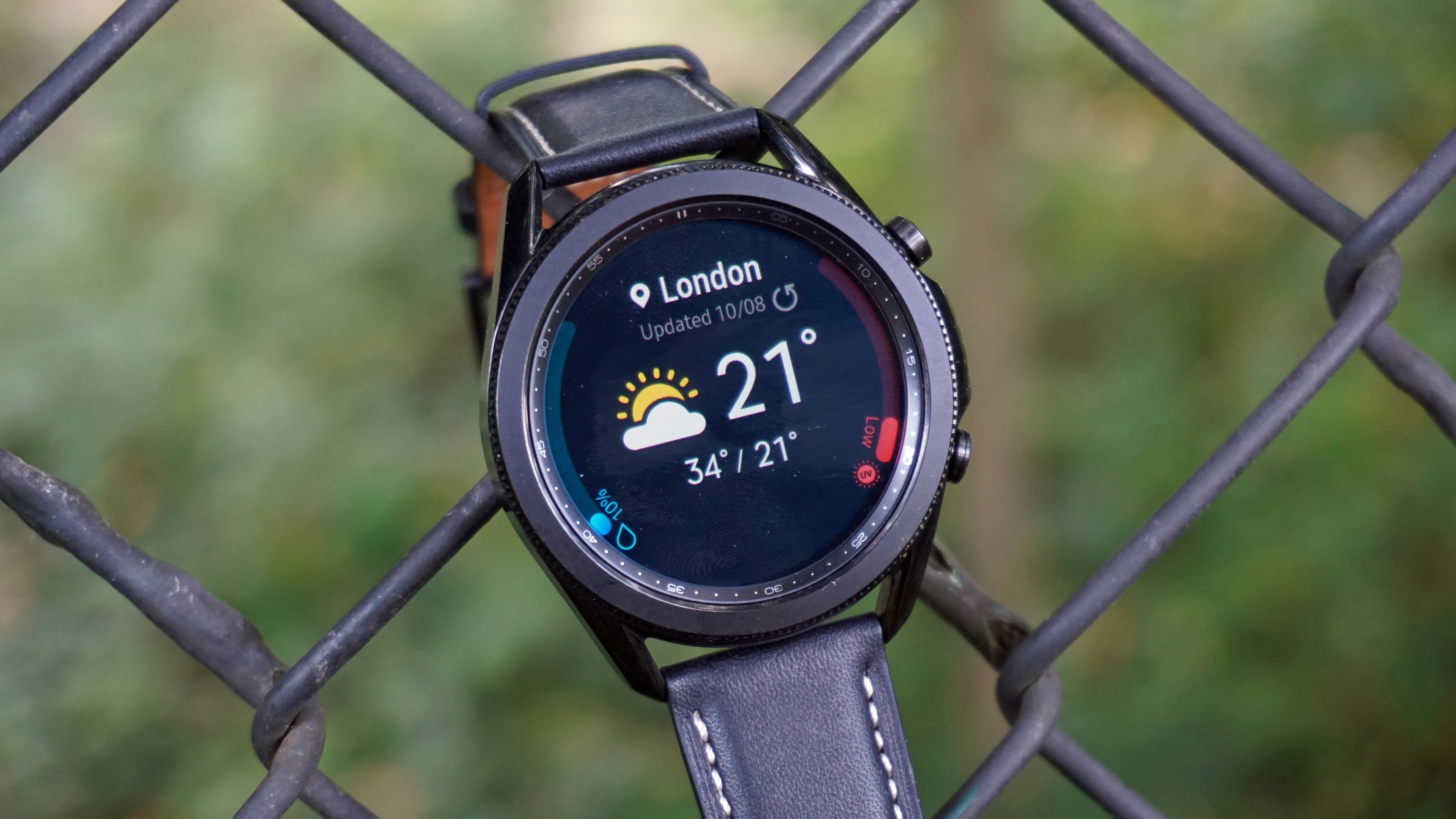
Its semi-follow-up the Galaxy Watch Active 2 was smaller but lost the physical rotating bezel control that made the Galaxy Watch series stand out.
The Galaxy Watch 3, you guessed it, tries to bring together the best of both. It’s smaller than the original Galaxy Watch, but still has its analog watch style and a rotating bezel. Oh, and its screen is circular, if you haven’t picked up on that yet.
It comes in 45mm and 41mm sizes, each a little larger than the respective Apple Watch Series 6 alternative. However, we do like that, among analog-aping smartwatches at least, the Galaxy Watch 3 is not overly thick, at 11.1mm or 11.3mm (depending on which size you choose).
Such watches often aim for timeless style, and usually land in a nerdy, techy-looking puddle. The Samsung Galaxy Watch 3 gets closer to the target than almost any other circular smartwatch in this regard.
Both watches have OLED screens, ones of high enough resolution to make pixel counts largely a non-issue.
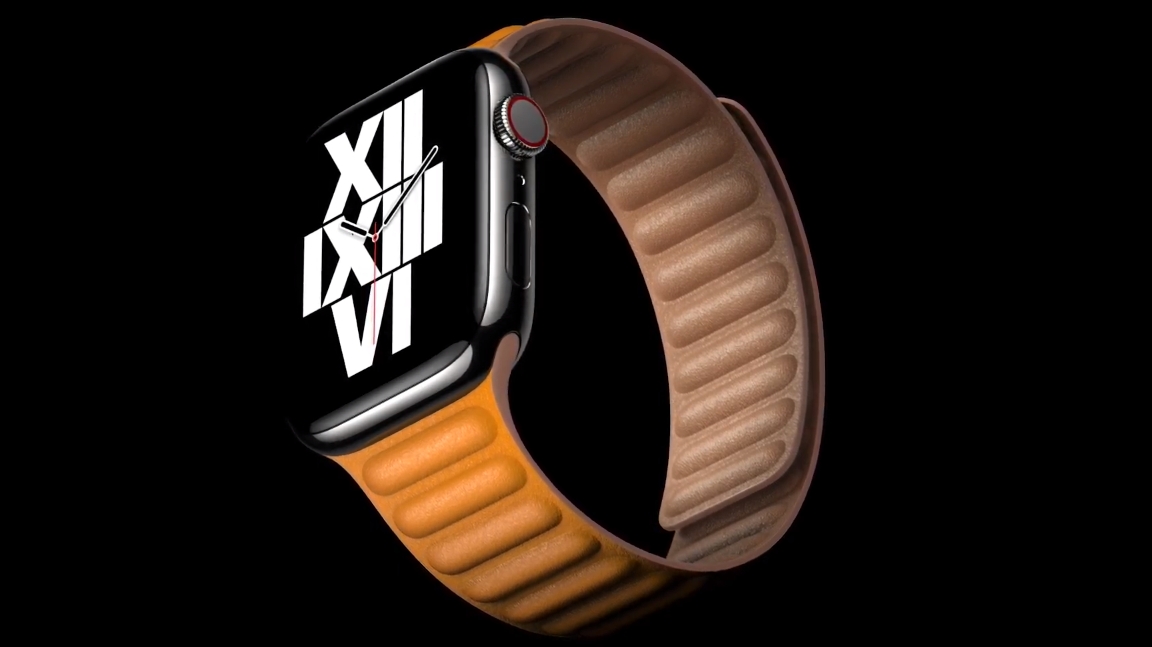
The larger 44mm Apple Watch 6 has a 1.78-inch screen of 448 x 368 pixels, to match Apple’s 326 pixels-per-inch (ppi) 'Retina' standard. The bigger Galaxy Watch 3 has a 1.4-inch circular screen of 360 x 360 pixels, and 364ppi. In both cases they are sharp, bright, and colorful.
Apple says the Watch 6 can ramp up to 1000-nit brightness, much like some of the brightest phones. Samsung makes no specific claims about the Galaxy Watch 3’s searing OLED pixels, but we’ve used it outdoors on a sunny day and had no issues seeing WhatsApp messages or our run stats.
They both have always-on screen modes too. With hardware and screen tech that is roughly matched, judge this one with your eyes. Sleek rectangle or analog-style circle: which do you prefer?
Samsung does have an edge in one respect, though. For the price of the aluminum Apple Watch 6 you get a stainless-steel Samsung. There is no aluminum version of the Galaxy Watch 3.
Fitness and features
In 2019 and 2020 we saw many wearables that tried to take on some of the jobs of medical devices. The Apple Watch 6 and Samsung Galaxy Watch 3 are prime examples, along with the Withings ScanWatch.
They have all the usual fitness tracking features. There’s GPS, an optical heart rate sensor, a gyro/accelerometer combo, and altimeter function.
An ECG/EKG (electrocardiogram) sensor and blood oxygen sensor are the more advanced additions. The Galaxy Watch 3 and Apple Watch 6 both have them.
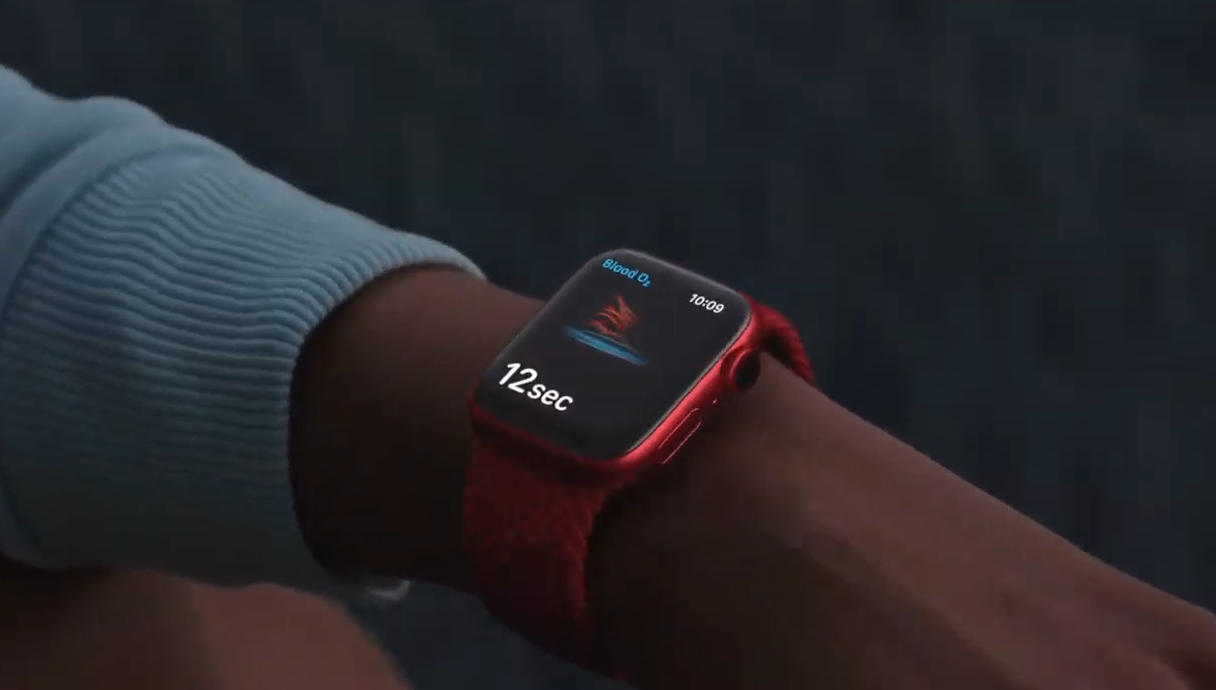
The electrocardiogram is, very roughly, an electrical alternative to the optical heart rate sensor. One electrode sits on the underside of the watch. Another sits on the crown of the Apple Watch 6, and on one of the Galaxy Watch 3’s buttons. Press a finger to one of these to complete the circuit and the watch can take a look at your heart rhythm.
The aim? To look out for abnormalities that may suggest an arrhythmia, which should be checked out by a medical professional.
Blood oxygen or SpO2 readings use a sensor on the underside by the optical heart rate monitor. Red and infrared LEDs pulse into the top of your wrist and an optical sensor records the reflected light level.
Oxygenated and deoxygenated blood absorb different levels of red and infrared light, so by monitoring the changes as your blood pumps, a wearable can make a good estimate of your oxygen saturation.
Features like SpO2 and ECG sensors need to be cleared by the relevant body in a particular country. It’s the FDA in the US, while the CE mark is granted by the EU. It's worth checking these are certified in your country. At the time of writing, for example, the features haven't been enabled in most parts of the world for the Galaxy Watch 3.

Why the red tape? Imagine how you’d feel if your watch suddenly told you it found a heart abnormality, or that your blood oxygen saturation levels were dangerously low. The certification process is designed to make sure such sensors work to an acceptable level of accuracy.
Both the Apple Watch 6 and Samsung Galaxy Watch Series 6 make excellent fitness and general health trackers. However, Apple has come up with a new and interesting extra for the tail end of 2020.
Apple Fitness Plus is a subscription service that offers guided video workouts on your iPhone, iPad, or Apple TV. These cover activities like yoga, indoor cycling and running on a treadmill. So, it’s a bit like Peloton, but the cost is a gym-busting $9.99 / £9.99 / AU$14.99 per month.
The Apple Watch’s part here is that it broadcasts your activity stats to the Fitness Plus interface, so you can see your heart rate and exertion as you work out.
Pretty neat, right? The Samsung Galaxy Watch 3 doesn’t have anything like this, but it can broadcast its own heart rate readings over Bluetooth. This lets you effectively use the watch like a chest strap HR monitor for third-party platforms like Zwift.
OS, power and battery
Samsung claws back some appeal with the Galaxy Watch 3's battery life. It has a 340mAh battery (247mAh in the 41mm version) that lasts for up to three days if you wear it all the time but don’t do too much with it. Or two days if you use it to GPS-track a run or two as well.
Apple says the Watch 6 lasts 18 hours, like the previous generation watches. While watchOS 7 now allows sleep tracking, you’ll need to find a time to recharge it other than overnight to do so. It’s seemingly still a once-a-day charger.
The Galaxy Watch 3's battery life is not great, but it’s better than the Watch 6's if Apple's estimates are right.
There is next to zero point talking too much about these watches’ processor power. They run different software and different apps, so their shared points of reference are next to nil. However, it is important to note that neither has an ultra-low power processor like the Huawei Watch GT 2 Pro’s - which improves its battery life but limits its smart features.
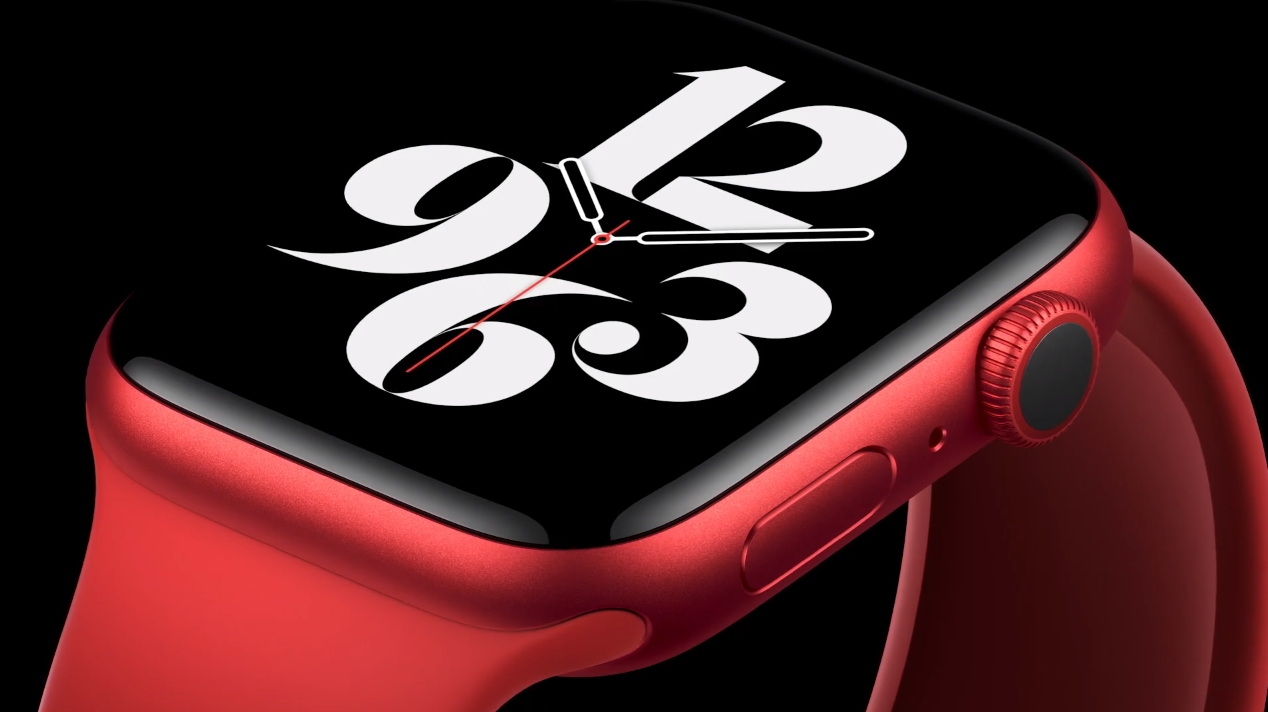
These are both 'proper' smartwatches, and that means each has an app store.
The Apple App Store is far better than the Galaxy Watch 3’s Galaxy Apps store, though. There are many more apps, and developers tend to put more effort into making them good.
It makes sense. There are far more Apple Watch owners than any other smartwatch platform, leading to more potential customers.
Facer is one of the few Galaxy Watch apps we’ve come back to a few times, and that’s simply a way to create and download more watch faces.
We do rather like the Galaxy Watch 3’s interface, though. It’s a Tizen OS-based system that uses the rotating bezel to scroll through pages of info screens, and a circular apps menu. Apple’s watchOS interface is more '3D', and more involved, so if you’re new to wearables you may find Samsung’s approach less fiddly.
Price
The starting price of these watches is the same in the US, at $399. In the UK and Australia meanwhile the Apple Watch 6 starts at £379 / AU$599 and the Samsung Galaxy Watch 3 starts at £399 / AU$649.
That gets you either an aluminum 40mm Apple Watch 6 with a fabric or silicone band, or a 41mm Samsung Galaxy Watch 3 with a leather band.
Want the larger version of either? That will cost you $429 / £409 / AU$649 for the Apple Watch 6 or $429 / £419 / AU$699 for the Galaxy Watch 3.
Costs for the 'cellular' or 4G/LTE versions are for the most part slightly higher on Apple’s side. It’s $499 / £479 / AU$749 for the 40mm Apple Watch 6, $529 / £509 / AU$799 for the 44mm.
Samsung charges $449 / £439 / AU$799 for its LTE 41mm watch and $479 / £459 / AU$849 for the 45mm model.
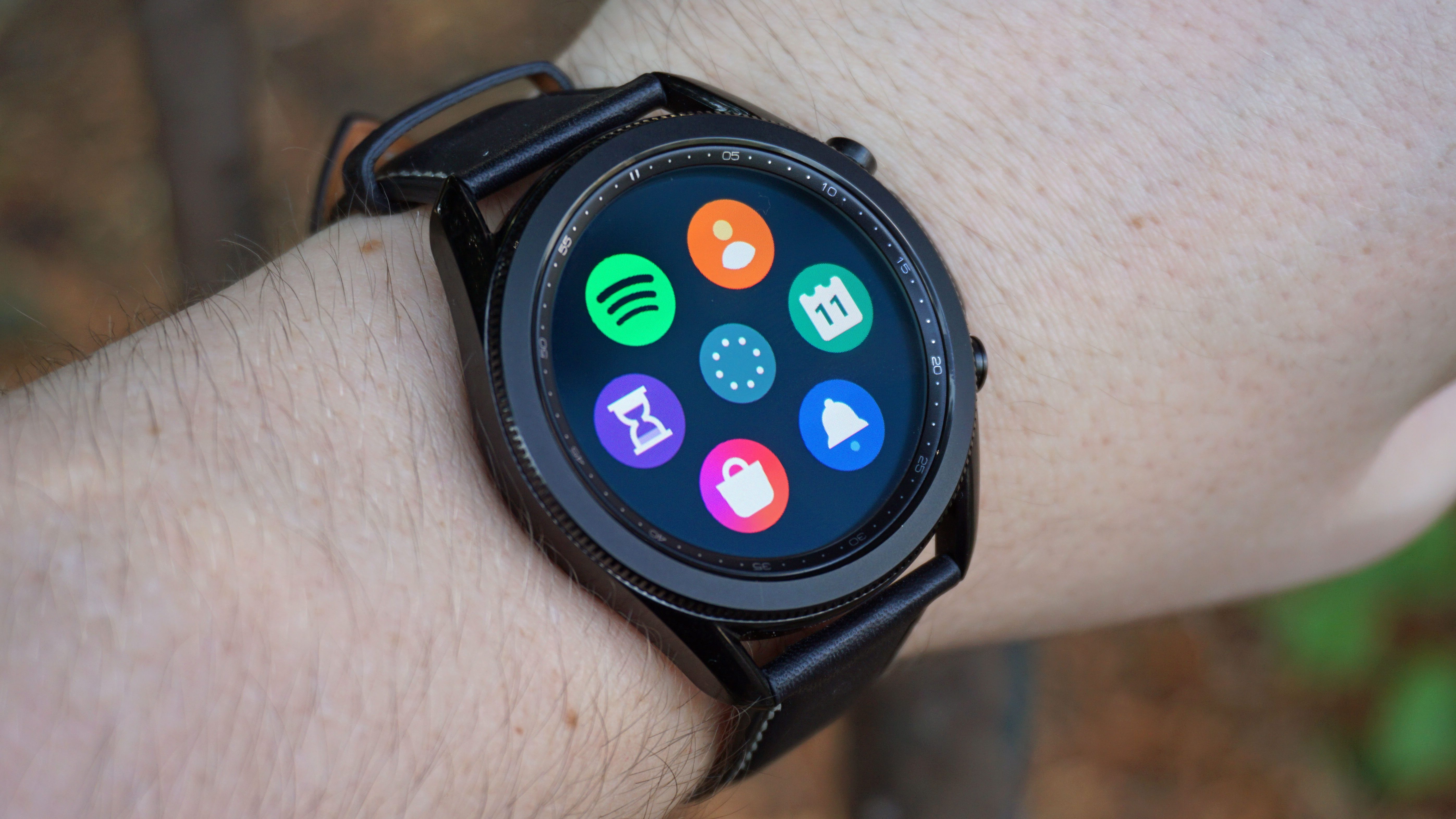
There are plenty of higher-price options in Apple land. Want a stainless-steel Apple Watch instead of an aluminum one? Prices start at $699 / £649 / AU$1,049. Head into its designer strap range and prices shoot up even higher. The Hermes Double Tour stainless steel edition is $1,399 / £1,349 / AU$2,119.
The standard leather strap upgrade alone is pricey.
Samsung has also announced a Titanium version, but at $600 (around £465 / AU$820) it doesn’t get close to Apple’s top prices.
Takeaway
This is tech pugilism at its finest. Two of the biggest names have trained up all year to make sure they can’t be KO’d in one punch by the other.
We already know who will win this fight in shops. It’s the Apple Watch 6, obviously. The chances of the Galaxy Watch 3 outselling Apple worldwide in this category are virtually nil.
There are two primary reasons to choose the Samsung though. First, its battery lasts longer than a day. We love this, and while we’d love two-week battery life even more, you just don’t get that in a full fat smartwatch.
Then there’s the look. Some will simply prefer the circular, watch-like appearance of the Galaxy Watch 3 to the once-futuristic, now simply instantly recognizable, Apple Watch.
An Apple Watch meanwhile is a better bet if you own an iPhone, if you like the sound of Apple Fitness Plus, or if you really want to dig into smartwatch apps.
- After other options? Check out the best smartwatches

Andrew is a freelance journalist and has been writing and editing for some of the UK's top tech and lifestyle publications including TrustedReviews, Stuff, T3, TechRadar, Lifehacker and others.